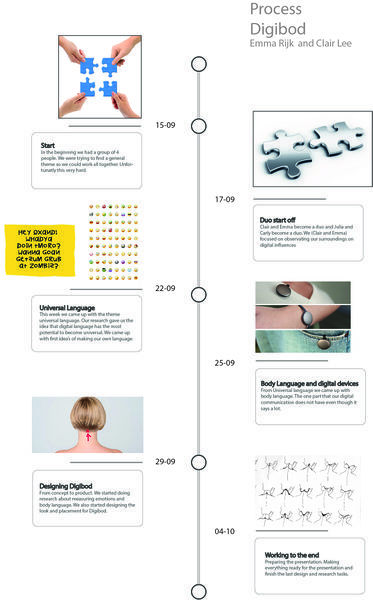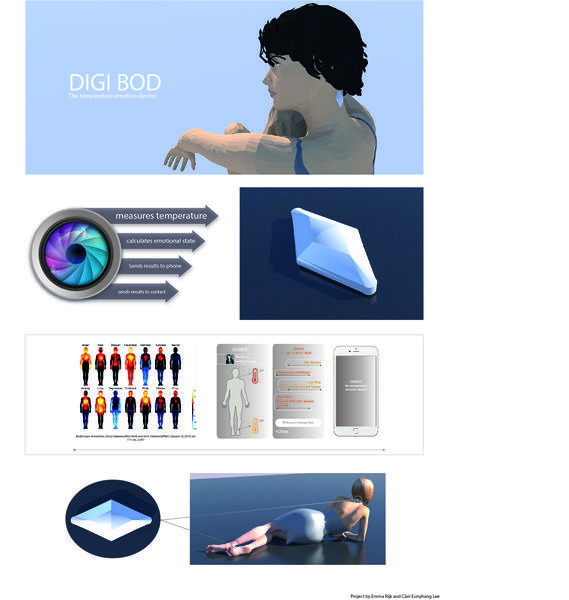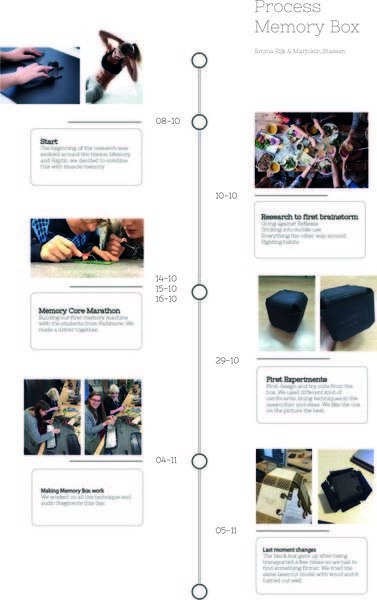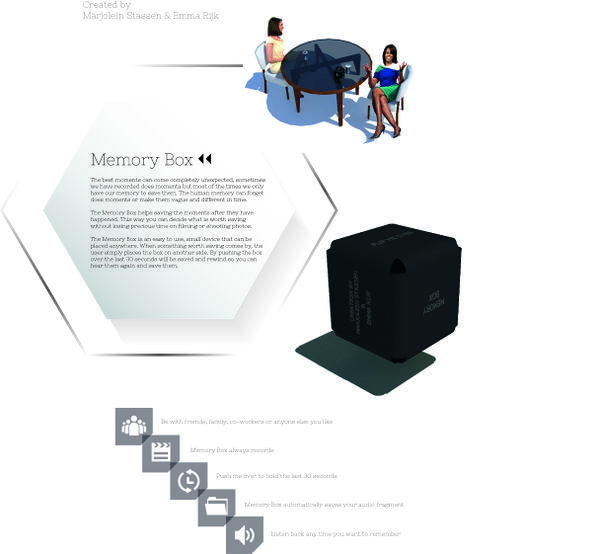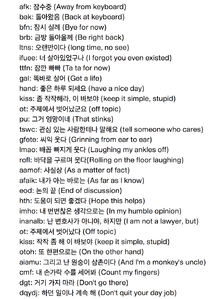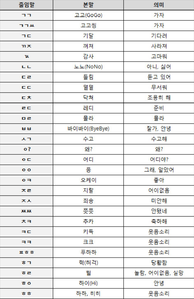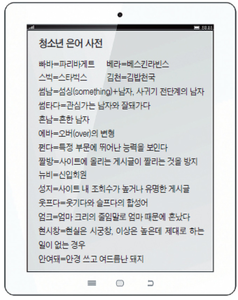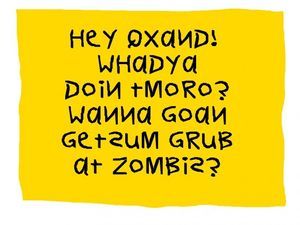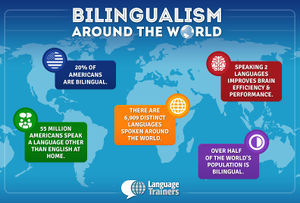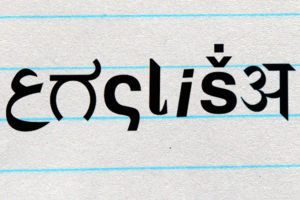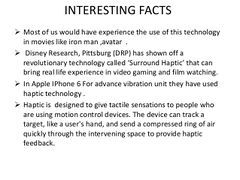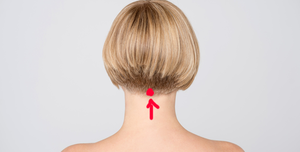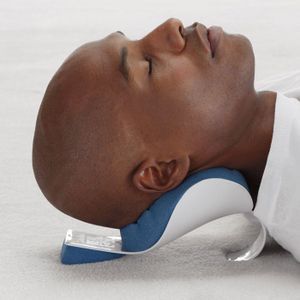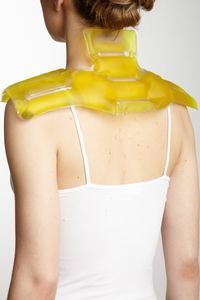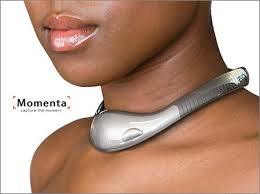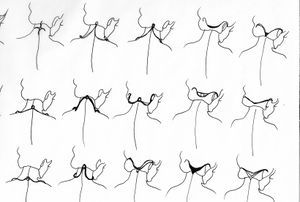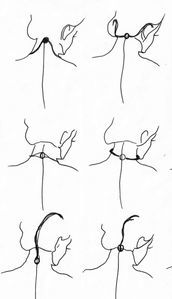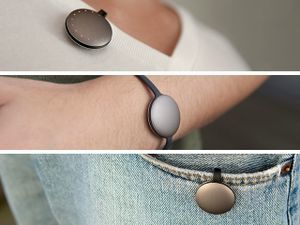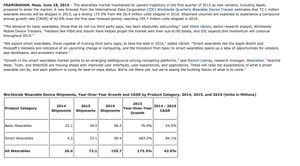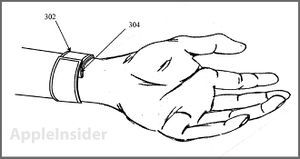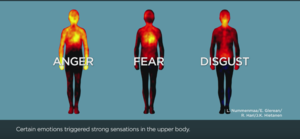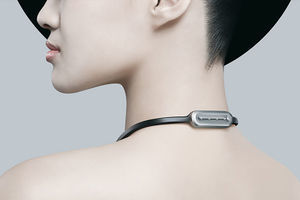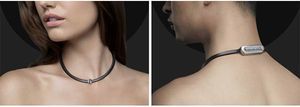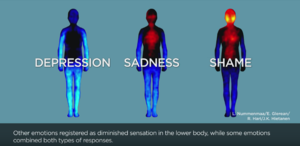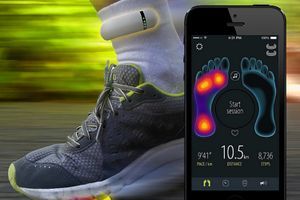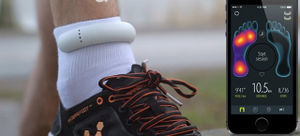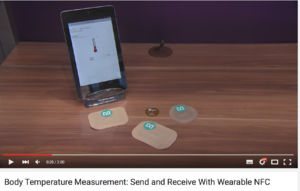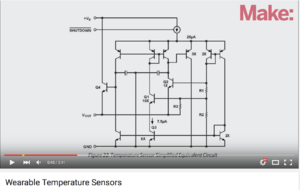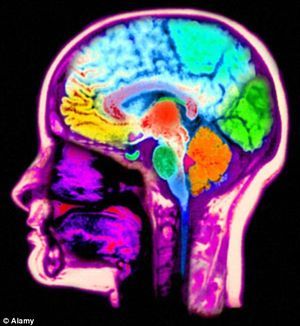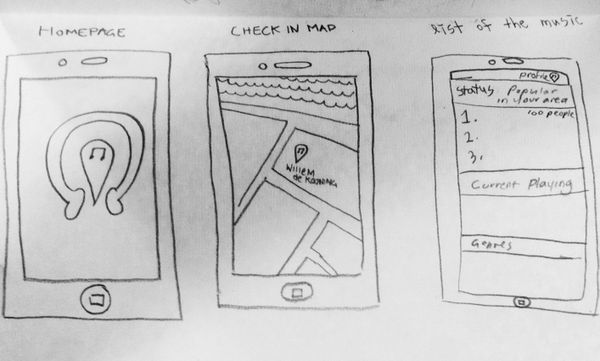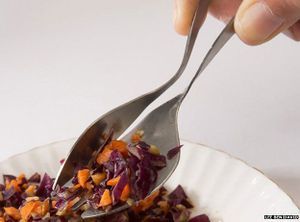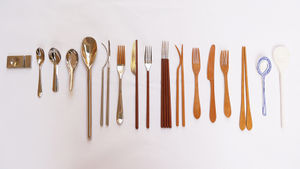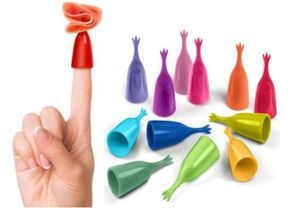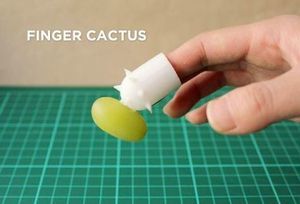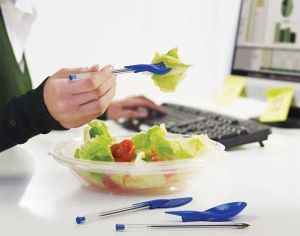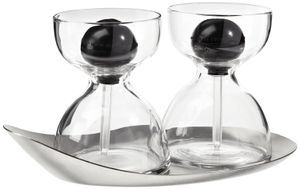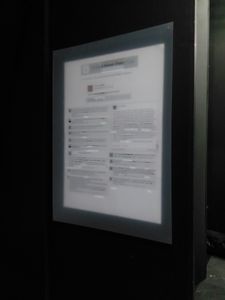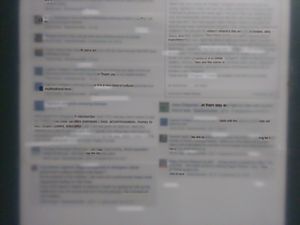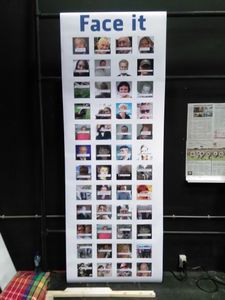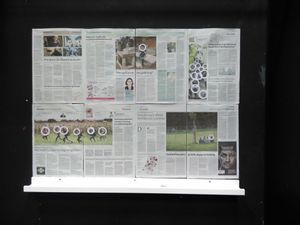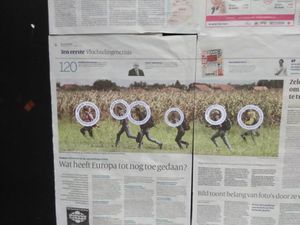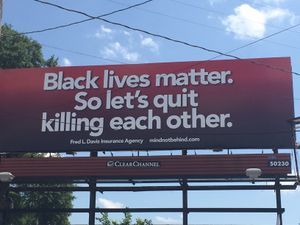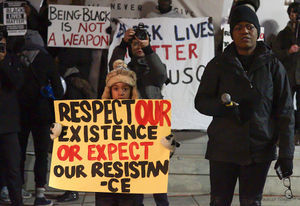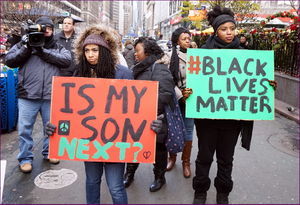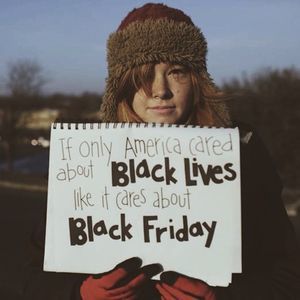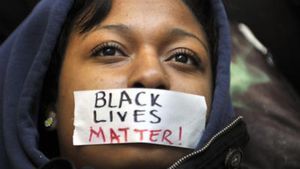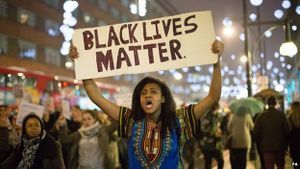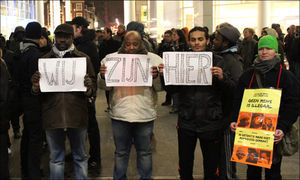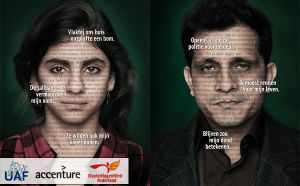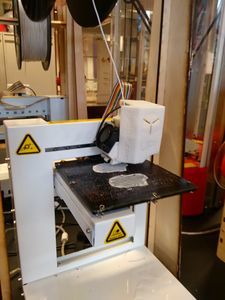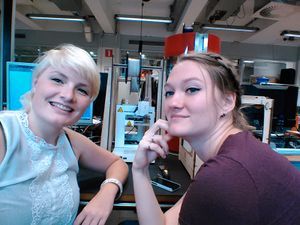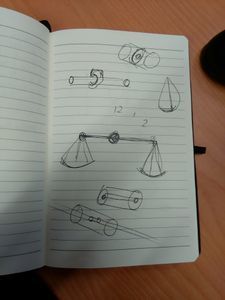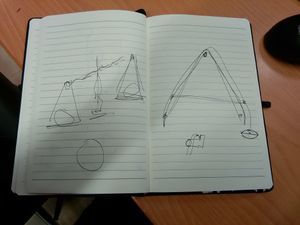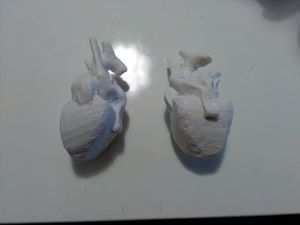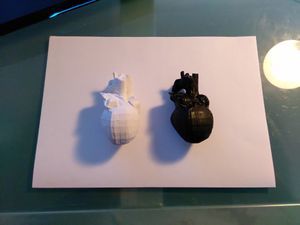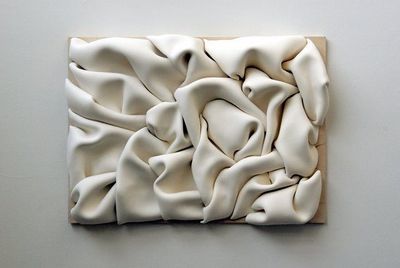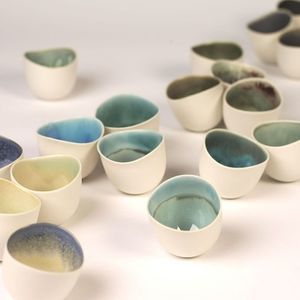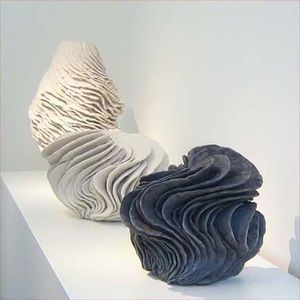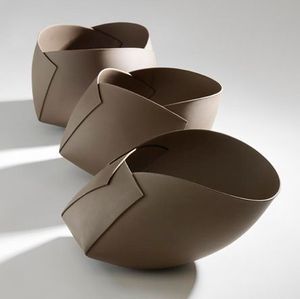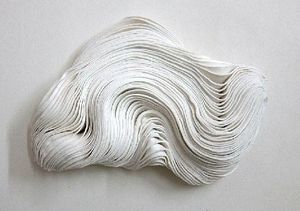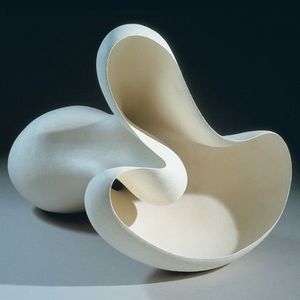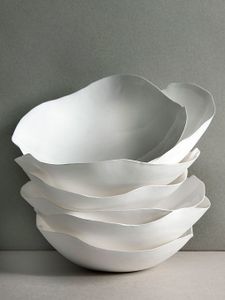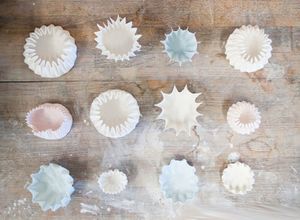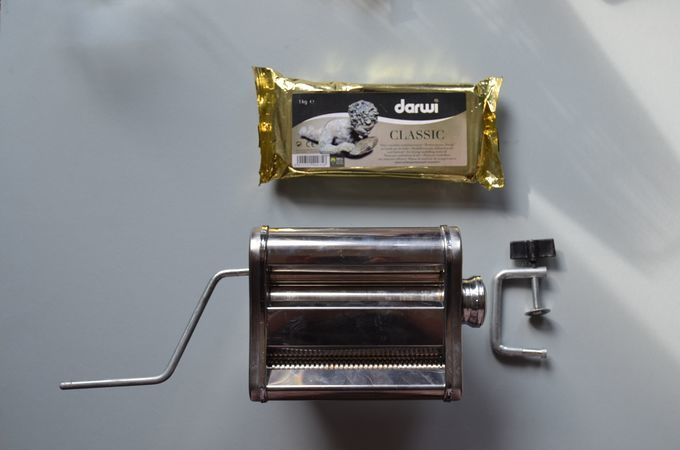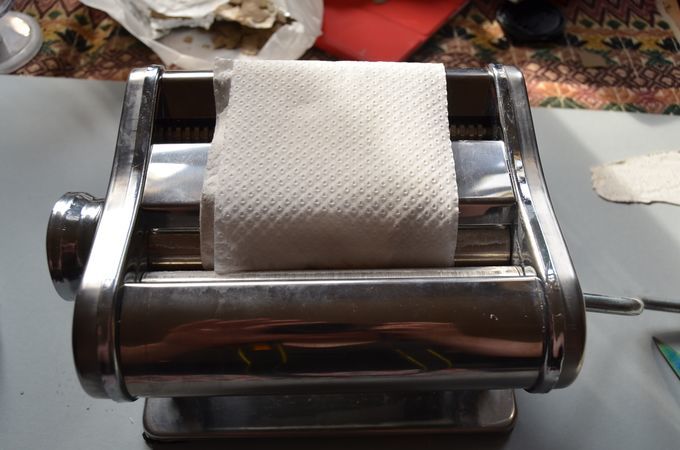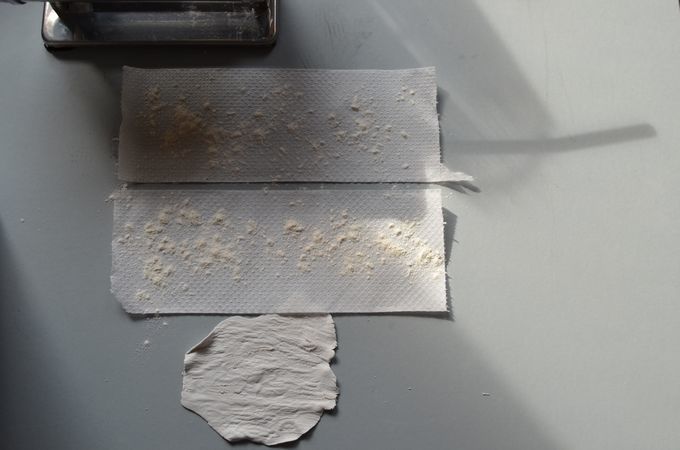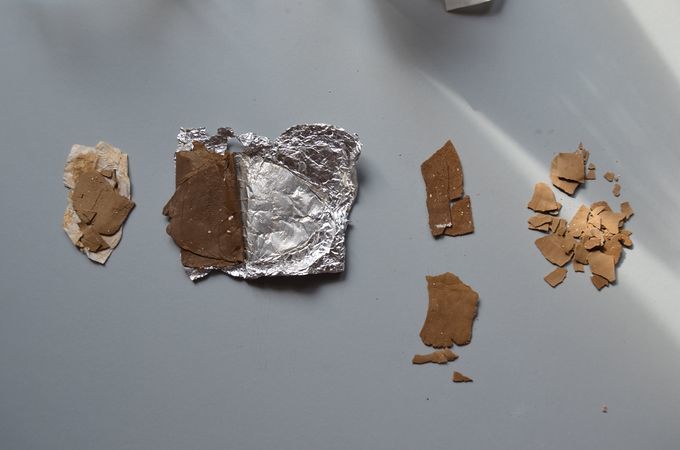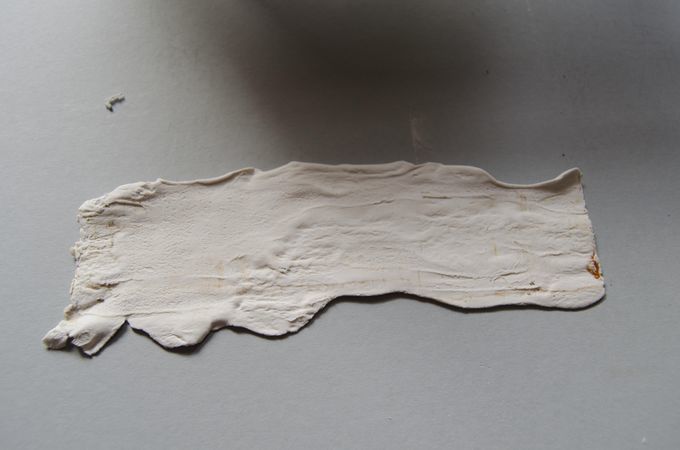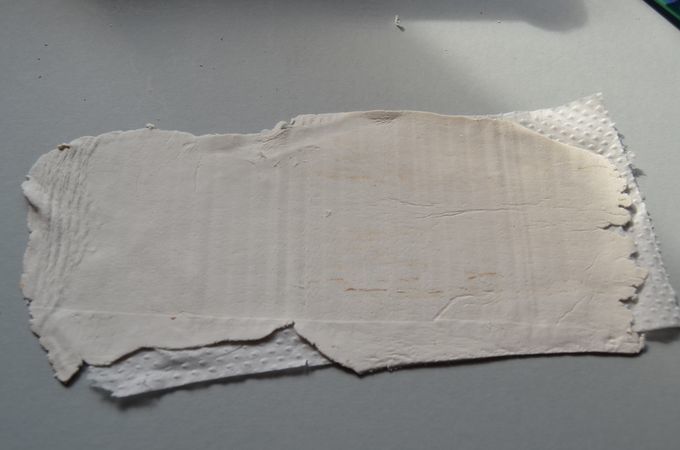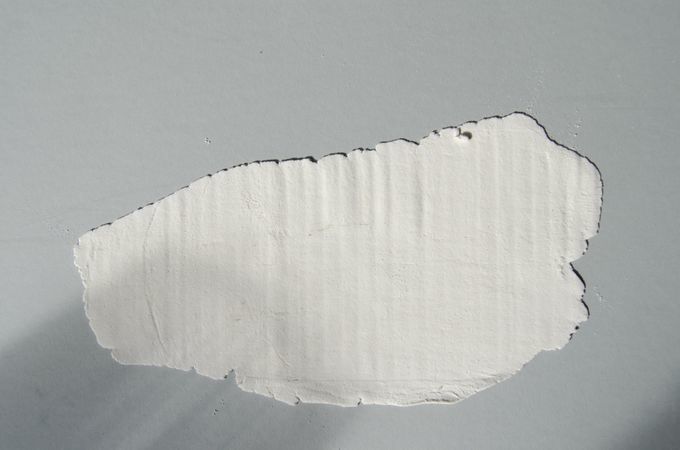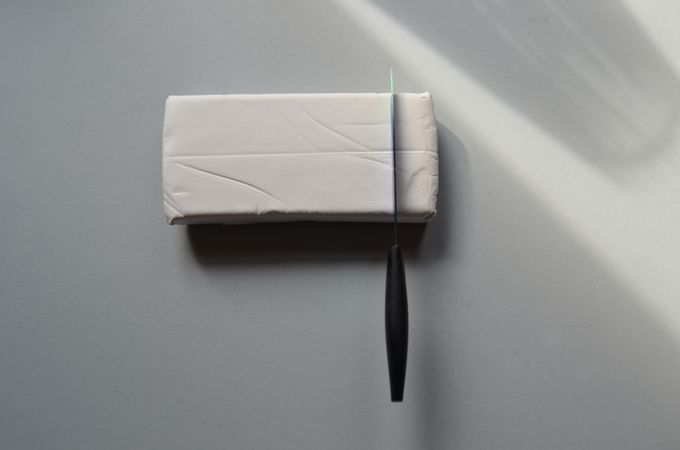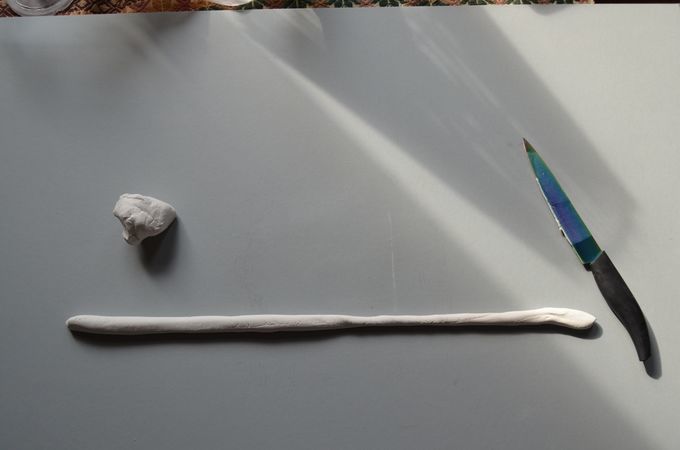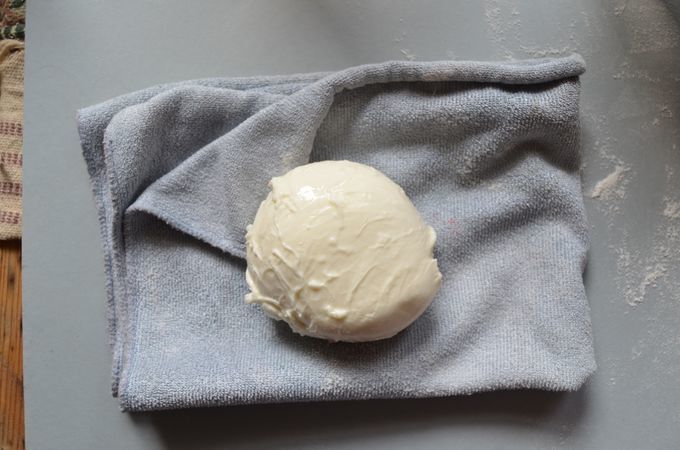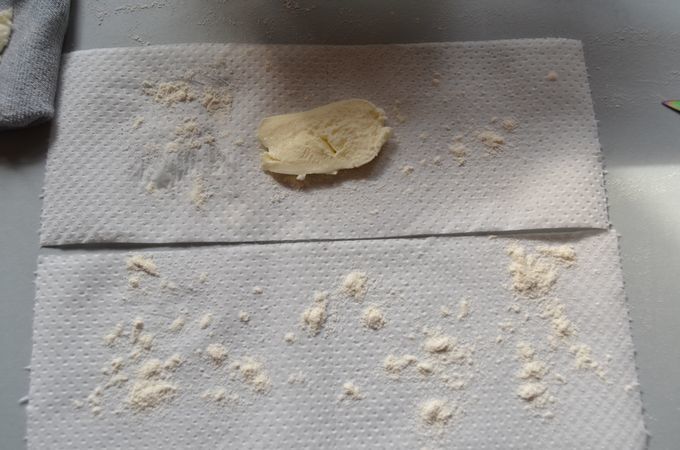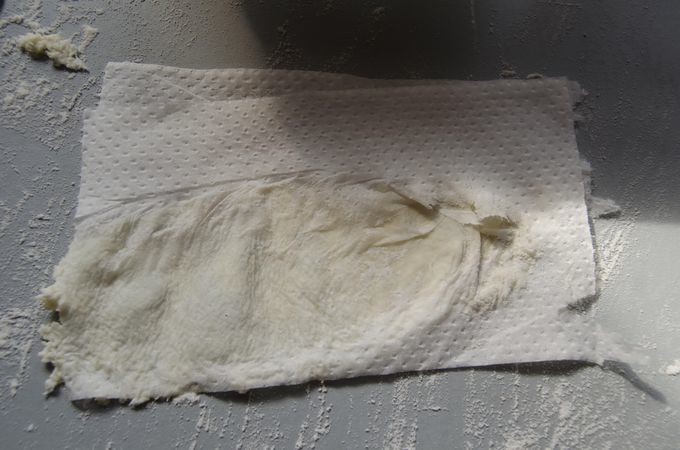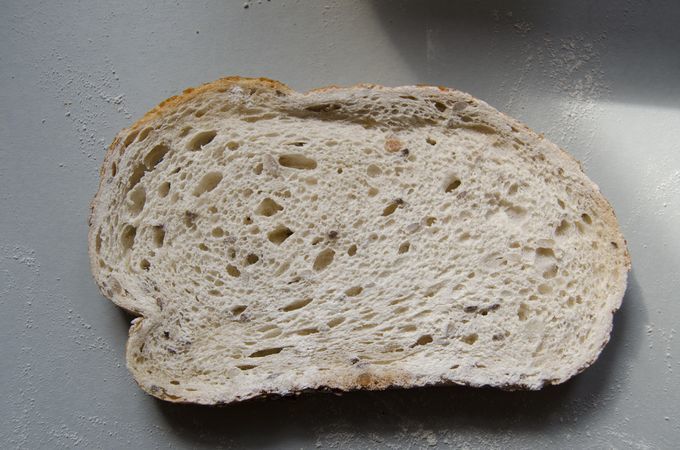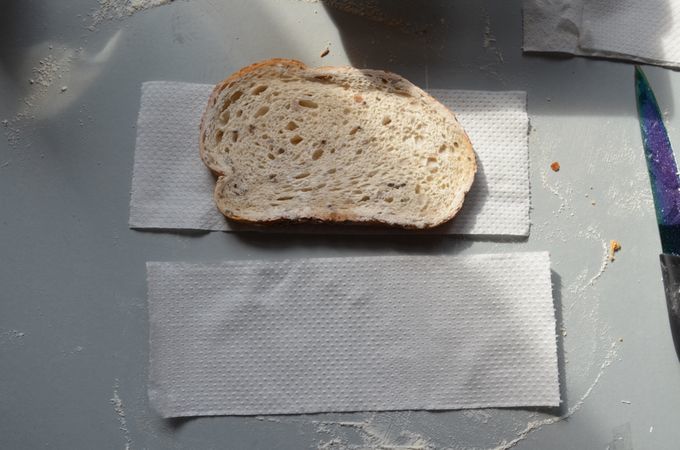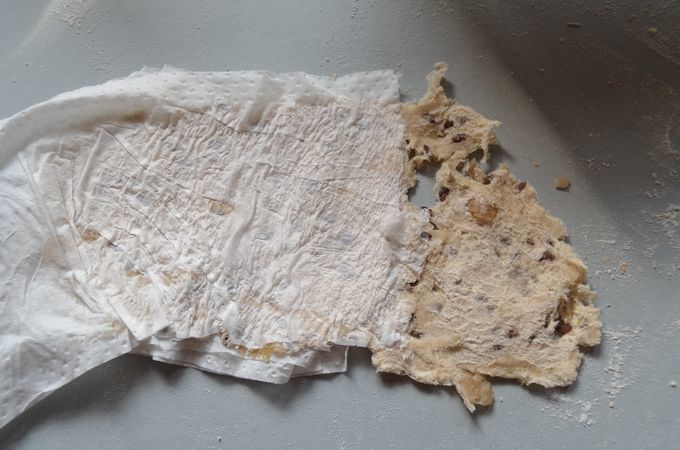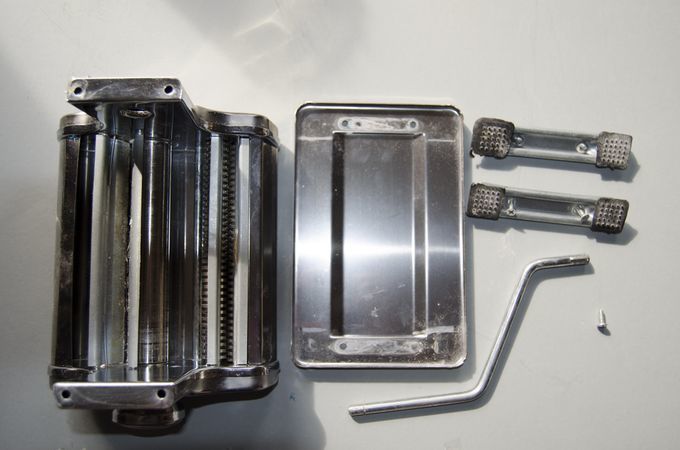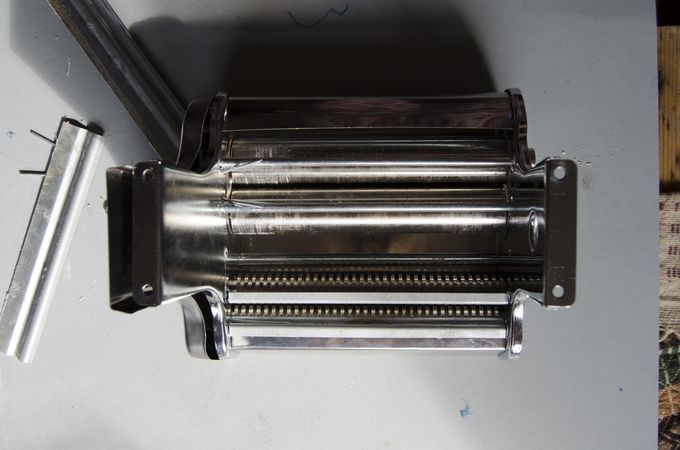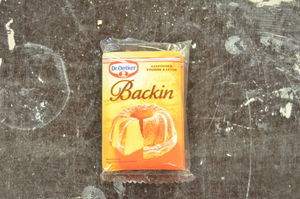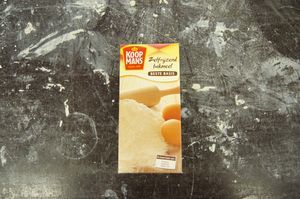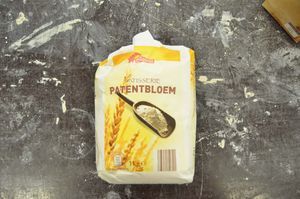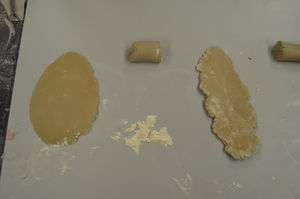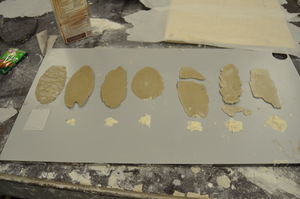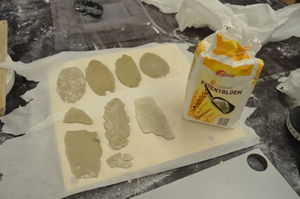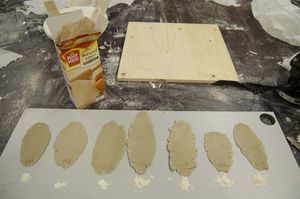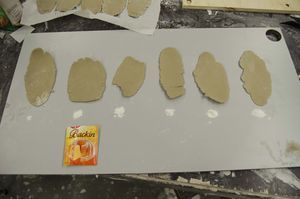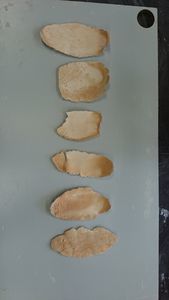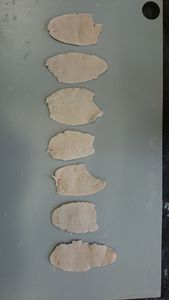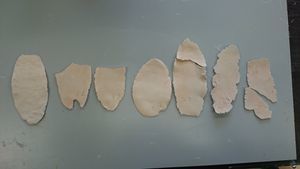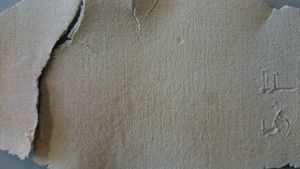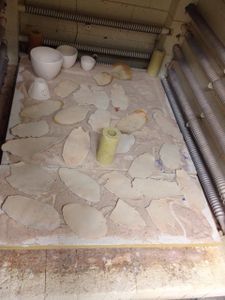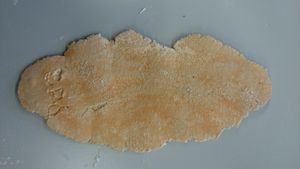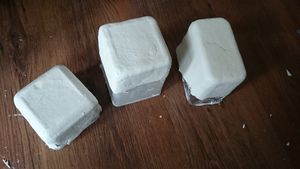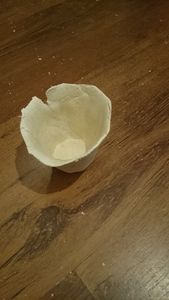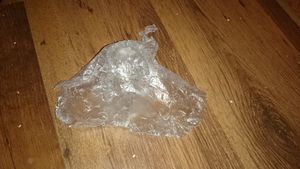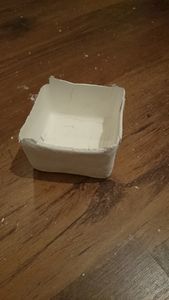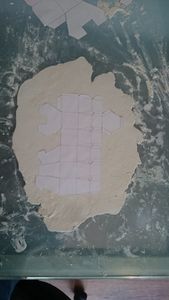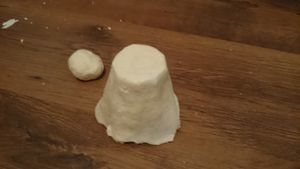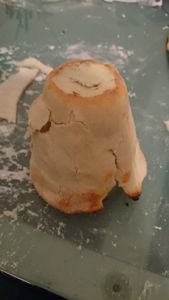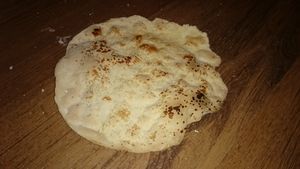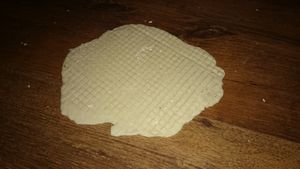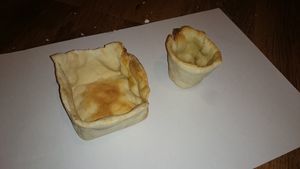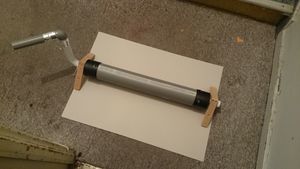User:Emma Rijk
Hi! My name is Emma Rijk, third year student Spatial Design and minor student Digital Craft.
On this Wiki page you can find my project from quarter 7 about Making Is Connecting on the bottom.
The work on top is quarter 9 about Meme's, this project is currently being developed.
Contents
- 1 Results
- 2 First idea's with group of 4
- 3 Week 1 Digital Culture
- 4 First week Idea
- 5 Week 2 Digital Culture
- 6 Link to interesting sites
- 7 Week 3 Digital Culture
- 8 Task List Digital Culture week 3
- 9 Feedback Gabriella 24-09-2015
- 10 Week 4 Digital Culture
- 11 Week 5 Digital Culture
- 12 Week 6 Digital Culture
- 13 Research week 7 Digital Culture
- 14 Project Jon, Memory Haptic
- 15 Progress 04-10 Future Food
- 16 to do list before Thursday
- 17 Witte de With Exposition
- 18 Black Lives Matter
- 19 Research
- 20 Inspiration
- 21 Quarter 7 Making Is Connecting
- 22 Summary Making Is Connecting
- 23 Inspiration
- 24 Spaghetti
- 25 Oven
- 26 Folding
- 27 Pasta dough
- 28 Machine
Results
First idea's with group of 4
Group: Juliah Rahliff, Clair Lee, Carly Muller and myself. Each participant in the group has a different discipline, we want to use the differences of these to create a diverse, big project. The different studies are:
Audiovisual (Clair Lee) Graphic (Juliah Rahliff) Fashion (Carly Muller) Spatial (Emma Rijk)
Week 1 Digital Culture
First week Idea
Group: Juliah Rahliff, Emma Rijk, Carly Muller and myself. Each participant in the group has a different discipline, we want to use the differences of these to create a diverse, big project. The different studies are:
Audiovisual (Clair Lee) Graphic (Juliah Rahliff) Fashion (Carly Muller) Spatial (Emma Rijk)
The overall topic will be; 3 generations in digital culture, from the generation before us, to our generation and the generation in the future.
Research Eunyhang Clair Lee : the changes of languages in three generations.Lots of abbreviations and slangs are used by young generation because of the internet.
After talking with the group of 4
So I am wondering how the language will be evolved in future generation.
And of course many older generation can't understand "the abbreviations and slangs".
So maybe in future some engineers will invent "the device" which can translate the abbreviations.
The overall topic will be; 3 generations in digital culture, from the generation before us, to our generation and the generation in the future.
My Research:
The medium and the way the digital culture is used becomes more and more universal. From being priviliged to have a computer to asking what kind of computer someone has. By now there are only two big competitors in the computer branche; apple and windows. It is normal to have a phone, it simply depends on what kind of phone... You have a Iphone? Really cool, you have a Nokia phone? Not so impressive... The tools we use and the branding behind these become more and more important.
Simply because of the fact that every person can buy a tool to communicate digitally with, wich only leaves the question behind what tool that would become.
From my observation point:
I have done some observation in my neighbourhood, outside the daycare. I have seen the parents pick up there children. First of all, almost every parent is busy on their phone as they are waiting for the children to come out. When the children come out, they don't have a digital device on them, but they will see the parent with the phone so most kids immediatly start begging their parents for their phone.
What also stands out is that some parents make pictures of their children coming out of school, besides the fact that it is a normal school day and nothing is special about it, it annoys the children who obviously share my opinion about these pictures being unnessecary. The children don't feel the urge to portray themselves a certain way through digital media.
Week 2 Digital Culture
This week we have decided to continue the project in two duo's. The duo that I will be in is with Clair.
We have decided to focus on the evolution in language. Primarly the changes affected through digital media. With our backgrounds of Spatial Design and audiovisual design we want to make a project that allows us both To use our disciplines.
We want to lose the given norm of language as a flat, written, communicative tool and see how we can unite any nationality without difficulty to use 'our language tool'.
After Some research for reference projects, Clair and I came up with the subject 'digital body language.
The emoticon image: The birth of emoticons show a flaw of human conversating on the internet, because we gather A big part of our information we gain from contact through body language, the digital world made plase for emoticons. These small symbols charaterize the feeling or expression that comes with a written text.
Link to interesting sites
- http://www.newbreedmarketing.com/blog/sales/digital-body-language
- http://www.wsj.com/articles/what-the-world-will-speak-in-2115-1420234648
- https://www.washingtonpost.com/news/worldviews/wp/2015/09/24/the-future-of-language/
Week 3 Digital Culture
Research 01-10-2015
Haptics is any form of interaction involving touch (from Greek ἅπτω = 'I fasten onto, I touch').
It can mean:
- Haptic communication, the means by which people and other animals communicate via touching
- Haptic perception, the process of recognizing objects through touch
- Haptic poetry, a liminal art form combining characteristics of typography and sculpture
- Haptic technology, technology that interfaces with the user through the sense of touch
- Haptics may also refer to touch and tactile.
Source: [1]
Ted inspirational talk about haptics and technology
Evolving the basic emotions into the haptic device. The seven basic emotions are:
- anger
- fear
- disgust
- contempt
- joy
- sadness
- suprise
Person touches device > device registrates> temperature of touch > movement of touch > pressure of touch > pheromones/ scents The information will be send through in direct information, for instance: A cold, shaking, soft touch, with a body scent
Research about the most sensitive spot of a body: I do this research because i want to find out what the best part on the body is to design the device for. Since the device will send different data that is based on touch it is important that the body part is able to pick these signs up.
I conclude out of these sources and other articles that the back of the neck is the most sensitive spot.
With the right stimulation on this point:
- Helps with colds
- Makes your brain sharper
- Better lung function
- Better sleep
- Helps the stomach
- Helps the thyroid
Requirements for the digi bod:
- - easy to wear
- - discrete
- - covers the special back in the neck spot.
- - futuristic esthetics
- - environmental friendly
- - a communication point sending messages through vibrations.
Task List Digital Culture week 3
Clair:
- Research about situations when the device is of use.
how to be used http://www.ohmynews.com/NWS_Web/View/at_pg.aspx?CNTN_CD=A0002124330
develope of the wearable market
- Research about different communication ways through different senses.
everyting of the wearable devices http://search.naver.com/search.naver?where=nexearch&query=%EC%8A%A4%EB%A7%88%ED%8A%B8%EB%B0%B4%EB%93%9C+%EC%8A%A4%ED%8A%B8%EB%A1%9D+%EC%A0%84%EB%8B%AC&sm=top_sly.hst&fbm=1&acr=5&ie=utf8
- Research/inspiration about the visualisation of the object.
- Research about body language 'most needed' in the device.
Feedback Gabriella 24-09-2015
- Find a user - Situations were this device is necessary - Fictional? - How will this look like? - Visualise object in everyday situations
Week 4 Digital Culture
Feedback from presentation:
- Think about interface
- Find more unconventional ways from heartbeat, temperature, movement
- Give the object shape
- How does this information communicate with the user?
Name of project: Digi Bod
- Body language through digital device
- Fictional device
- Criticizes digital communication
- Showing the need to society
- Using the device in nessecary situations
- Growing market in wearable devices
- Heartbeat monitoring
- Sincere, honest
Situations the device is most necessary in:
- Long distance relationships
- Long distance interviews
- People you don't know but need to trust
- Difficult conversations
The device measures:
- Temperature
- Movement
- Heartbeat
Week 5 Digital Culture
Clair:
- Research about situations when the device is of use.
- Research about different communication ways through different senses.
- Research/inspiration about the visualisation of the object.
- Research about body language 'most needed' in the device.
Emma:
- Research about situations when the device is of use.
- Research about different communication ways through different senses.
- Research/inspiration about the visualisation of the object.
- Research about body language 'most needed' in the device.
Week 6 Digital Culture
We want to combine haptic and seismic communication.
Definition of seismic communication: [9]
The device will be able to gather the information of the person wearing the gadget and then sending the Result of the information (which emotional state you are in) by seismic/ haptic communication. This will look like a gadget in the back of the neck sending vibrations that communicate.
To find out what emotional state the person the next link gives the scientific research that shows body temperature translated Into a emotional state. [blah.kr/175]
---Emotion and body---
Unlike thoughts, the emotions don’t live entirely in the mind, they are also associated with bodily sensations.
A well known example is when we fall in love with someone: we report getting ‘butterflies in our stomach’.
A recently published study focused on where people experience different emotions in the body (read the full article here).
Thanks to this new study, for the first time we now have a map of the links between emotions and bodily sensations.
http://positivepsychologyprogram.com/link-happiness-and-bodily-sensations-visuals/
BODILY MAPS https://www.youtube.com/watch?v=cZP_I6NkQb4
---upper body: neck wearable device---
measure the upper body temperature. sending emotion and recieving the other's
---downside body:anklet wearable device---
---How can the wearable device measure the body temperature ---
HOW TO MAKE https://www.youtube.com/watch?v=N9gW5cmOb78
---Research 01-10-2015---
Haptics is any form of interaction involving touch (from Greek ἅπτω = 'I fasten onto, I touch').
It can mean:
- Haptic communication, the means by which people and other animals communicate via touching
- Haptic perception, the process of recognizing objects through touch
- Haptic poetry, a liminal art form combining characteristics of typography and sculpture
- Haptic technology, technology that interfaces with the user through the sense of touch
- Haptics may also refer to touch and tactile.
Source: [10]
Ted inspirational talk about haptics and technology
Evolving the basic emotions into the haptic device. The seven basic emotions are:
- anger
- fear
- disgust
- contempt
- joy
- sadness
- suprise
Person touches device > device registrates> temperature of touch > movement of touch > pressure of touch > pheromones/ scents The information will be send through in direct information, for instance: A cold, shaking, soft touch, with a body scent
Research about the most sensitive spot of a body: Emma did this research because She want to find out what the best part on the body is to design the device for. Since the device will send different data that is based on touch it is important that the body part is able to pick these signs up.
I conclude out of these sources and other articles that the back of the neck is the most sensitive spot.
With the right stimulation on this point:
- Helps with colds
- Makes your brain sharper
- Better lung function
- Better sleep
- Helps the stomach
- Helps the thyroid
Requirements for the digi bod:
- - easy to wear
- - discrete
- - covers the special back in the neck spot.
- - futuristic esthetics
- - environmental friendly
- - a communication point sending messages through vibrations.
Echoic Memory -- Echoic memory is one type of sensory memory process. Specifically, echoic memory is sensory memory associated with auditory information received from the environment. The term echoic stems from the word echo, which is in reference to the brief echo, or the reverberation of sound that is transmitted neurologically via this type of sensory memory.
Case Study: Clive Wearing
British conductor and musician Clive Wearing contracted a brain infection in 1985. He was left with a memory span of only 10 seconds. The infection - herpes encephalitis - left him unable to recognise people he had seen or remember things that had been said just moments earlier. However, despite being acknowledged by doctors as having one of the most severe cases of amnesia ever, his musical ability and much of his musical memory was intact. Now aged 73, he is still able to read music and play the piano and once even conducted his former choir again. Researchers have come to believe they are closer to understanding how musical memory is preserved in some people - even when they can remember almost nothing of their past.
Scientists are trying to understand how amnesiacs can lose all memory of their past life - and yet remember music. The answer may be that musical memories are stored in a special part of the brain. In tests his musical memory was classified as 'normal' - even though the rest of his brain was so badly affected he could not remember the layout of his flat, the Guardian reported.
--- BRAINSTORM ---
An app to share the music memory linked with a particular location. The App would collect music potentially from Spotify or another online music sharing site. By using this App people will begin to appreciate the way in which the identity of a place (eg. neighbourhood) is shaped and evolves with music.
Research week 7 Digital Culture
echoic memory
Echoic memory plays an extremely important part in our every day lives. From the day we are born, we are exposed to symbolic sounds (e.g. from sirens and alarms to atmospheric sounds - waves, wind) that are stored with their meaning in our echoic memory - similar to that of a dictionary. These symbolic sounds are used to assist, inform and in some ways dictate parts of our daily routine. As strong as the iconic sounds in our echoic memory are - when paired with the visual and haptic parts of our memory they become stronger. Our project aims to test and question the strength of one's echoic memory sense.
We began thinking about the way individuals listen out for particular sounds. When we are familiar with a certain order of sounds it can tell us a lot about the situation we are in or experiencing. This can range from the simplicity of listening out for the sound of the buzzer at the traffic lights to more complex, individual circumstances. For example after a few weeks of living next-door to my neighbour I was able to put together a timeline of sounds that I would expect to hear when he either arrived or left his apartment.
When an individual is exposed to a number of purposely generic, artificial sounds (e.g. footsteps) that do not necessarily follow a cohesive order are they still able to pick up on the general gist of what is occurring? Our interactive compilation of different sound pieces tests this theory. It invites the audience to make up their own sense of the actuality of the sound piece and in turn question how strong and how personal an individuals echoic memory is on it's own.
Project Jon, Memory Haptic
08-10 Start of assignment.
Combining muscle memory and haptics.
Experiencing seasons throughout A year can be different for anyone. What makes the same time and circumstances feel different for everyone.
MUSCLE MEMORY // RESPONSIVENESS (LIFE THREATENING SITUATIONS)
How to fall Diving Playing Instrument Biking Horse Riding Writing Nascar Drivers
Ideas
Going against Reflexes.
Tricking into mobile use
Everything the other way around.
Fighting habits
Changing eating habits. In the future not only we will have one universal language but also one universal eating habits with a new set of cutlery.
An interesting link to a few projects of PHILIPS evolving around food and future machines. [18]
Progress 04-10 Future Food
What happens when people eat and everything except for the food is registered? Wich things make our sitting together and having food an exceptional experience?
In this week we decided to take a more poetic approach to the future food concept. We mainly want to focus on the stories told while eating.
- Food9.jpg
Poetry and food combined
During our conversations we decided to focus on the stories being told while having dinner together. Just like the program 'Man Bijt Hond' we will go to people and join them while having food together. The stories that are being told while function as a tool to create our memory machine.
We also found inspiration in the hitsong of Adele; Turning tables [19]
Adele found her inspiration for this song while having dinner with her friends in a restaurant that has turning tables.
Research about sound pitches: [20] [21]
to do list before Thursday
Clair- research about the body temperature, vibrations as communication. Emma- Make a design of how it will look like.
Witte de With Exposition
Black Lives Matter
Meaning and Impact
The meme 'Black Lives Matter' is founded by Alicia Garza in 2013. This happened after Garza wrote a comment under an article that involved police brutality against black people. Garza was soon backed up by her future co-founders Patrisse Cullors and Opal Tometi who helped creating the hashtag and gain popularity.
The goal of the hashtag and meme 'Black Lives Matter' is to raise awareness of police brutality against black people. It has come to attention that an alarming high amount of police officers have not been sentenced or received a mild punishment for their brutality during work hours.
The movement started in USA when a police man called George Zimmerman shot Trayvon Martin. Martin actually did not have a gun or any other dangerous tool with him. Because of that fact, Martin did not cause direct great danger and so, the shot fired by Zimmerman, the police was unnesecary.
This year the aruban man Mitch Henriquez was put in a 'neck grab' and sat on by 5 police men. Henriques passed away in The Netherlands, The Hague for no clear reason. The death of Henriquez brought the 'Black Lives Matter' movement to the Netherlands. This resulted in riots and protests on the streets in The Netherlands and mostly the area of Schilderswijk, The Hague.
Spreading the word
When searching in google for 'Black Lives Matter' it instantly becomes clear that most of the people spread the word through the computer. Sometimes the message stays true to the original message and sometimes it differs to racism and lines such as: 'White Lives Matter' and 'All Lives Matter'.
The part that caught my interest is the way people bring the message out in different ways then digital. The following images show some examples that proof there are other ways to get the message out:
Research
Exhibition Black Lives Matter
Floor Steinz and I make the group supporting the 'Black Lives Matter' meme. Together with a few other students we have created the group 'Abuse of power'. The 3 duo's creating this group have all communicated on the 3rd of september about the theme and approach. Rens van Pinxteren came with the recent news about refugees. Right now the news is mainly focused on all the refugees that flee overseas and eventually drown, or get send back. Our group wants to focus on this topic from the point of view from the politics (from the meme Women In Binders), a group covering the violence and lack of respect from authorities (the group with meme; pepper spray police), my own group will be covering the racism and inequality of value of these lives.
Floor and I brainstormed about the subject racism and inequality. We came up with the idea to take the symbol of a scale to communicate the distortion in value of lives. We have made a few sketches to find new ways to make a scale. We decided to make the scale partially 2d so Floor can use her Illustration background. The other part of the scale will be spatial so I can use my background.
To bring our meme of 'Black Lives Matter' in our piece we decided to print two hearts, one white and one black. Both hearts will be poured in a epoxy weight so they float. The black heart will be in a small weight representing the value of the heart in the context. The white heart will have a bigger weight and communicate 'more weight, more worth'. This is obviously not how we think of black and white people, but we hope this will bring consciousness to the viewers of how absurd the situation is.
The standard of the scale will be a sticker designed by Floor. The stand of the scale is not the most important part of the installation but will support the message so we decided to make that part 2d. The hearts in weights will be spatially put up in a position were the scale will point the heavier heart lower and the lighter heart higher. This part will come forward so the attention will be on the hearts.
A few pictures about the overall topic 'refugees':
Refugees, the theme of the group
Inspiration
Quarter 7 Making Is Connecting
About my work
Statement
My process started with an interest for thin ceramics that give an impression of textile.
When I started to
roll different ceramic sorts into a thin piece I decided I wanted to make my own machine.In the beginning I bought a spaghetti machine to find out what the best material would be to put in between two rollers. After finding the right substance I wanted to create my own rolls that shape the material. In the end I want to try to create a collection of dishes using the thin pieces of ceramics. The dishes will have the appearence of paper or a product you would normally throw out, but won’t have the functionality of normal dishes that can be washed for instance; furthermore my dishes won’t be able to hold liquids. The process that mostly inspires me is the pressing of the materials and the idea of giving a new look and meaning to a material. The pressing machine has a nice combination of manual labour and machinery. By changing the rolls in the machine, the machine can make an endless amount of different objects, not requiring the craftsman to master all the techniques, by simply rolling the rolls past each other. Any pattern or extrusion in the roll can make the material change shape.
The content of my work is based on a combination of a few techniques, first of all I want to create a part of a tool that can be replaced with different parts. I’ve learned more about materials and the experimenting with them: I did this in my process of finding the right substance for my spaghetti machine. Additionally, I found a project that doesn’t really fit in the story of Ruskin or the idea of industrialism. My tool is literally a combination of mastering the right combination of material and the right combination of rolls,which needs experience.However,it’s also a machine and the actual movement that gives the material shape is a repetive and not difficult as it is basically circling a wheel forward to make the rolls move the material in between. Thus, the question I would ask is whether my machine really is a machine that makes the user feel detached from the object repeating a constant, braindead movement or is the crafter enough involved in the ‘preparation’ of the actual process that it makes him feel more attached and fulfilled when he makes the object.
The machine I’ve been building will be only for me: I made the machine in a way that it fits my needs for this process and therefore it is not for commercial use. The machine works with Velcro and it exclusively for use with textile,which alienates the machine from a normal spaghetti- or clay roller.
There is a broad historical context to the basics of my tool. Already since the 1st century BC several forms of pasta have been found. My source described the beginnings of pasta as being made of a fine sheet of dough, which reminds me of the thin ceramics I was talking about earlier. The first actual pasta as we know it today has been dated in the 13th and 14th century.
Source:http://en.wikipedia.org/wiki/Pasta
During my progress I realised that I wanted to work on a craft that is my creation. My process started with a commercial object and a historic result but ended up to be a tool that provides to my exact needs. This object definitely makes me want to explore new visual language. If I had more time, I would try to find a wider variety of different roller pieces and I would like to do more tests with clay and baking that in the oven.
In the end it boils down to these categories:
- Making a tool
- Experimenting with materials
- A position in a larger debate
Why I Make
I make to find a new purpose and understanding of a historical machine. I want to push the boundaries between crafts and industrialism, ‘When is a machine bad for the well-being of an employee and what is crafts exactly?’ I want people to doubt what they think they know. I want people to reconsider what they have. In my process I’ve developed from knowing only standard crafts knowledge to a personal, unique way of making and my own drive within my process to grow. I know more about the history of making and the standpoints people can take in that part. I cannot find myself to be completely a crafter or completely involved In industrialism, this is probably because I don’t know the exact difference. I want to make to understand myself, to know when I made changes and decisions, to understand why I do something wrong or right, to see when I feel successful and when not, to feel the urge of making the next step to see the result. To look back and see what I have done.
Summary Making Is Connecting
Chapter 1
Making = feeling and thinking Feeling and thinking = part of making
Crafting can be fullfilling, nessecary, and can make a person aware of its process. This makes it possible to put ideas and knowledge in the process while the crafter also learns something in the meantime. So, because of the crafting you become a part of your work and so, it can grow and develop as long as you are a part of it’s creation. Ruskin was a social thinker and his ideas of a better society were that the industralism would have to go and we should have more respect for the people and the environment.
For Ruskin, financial wealth which does not contribute to the stock of human happiness is no wealth at all. John Ruskin - A human being can be forced to work as a ‘tool’, following the precise instructions of their masters, making things correctly, but they are dehumanized and their spirit is gagged. Or they can be allowed to ‘begin to imagine, to think, to try to do anything worth doing’ – and this might lead to roughness, failure, and shame, but also unleashes ‘the whole majesty’ of the individual.
We are always in these days endeavouring to separate the two; we want one man to be always thinking, and another to be always working, and we call one a gentleman, and the other an operative; whereas the workman ought often to be thinking, and the thinker often to be working, and both should be gentlemen, in the best sense.29
Conclusie Ruskin his great contribution was to establish individual autonomous creativity as a core value which society must nurture, not crush, if it is to retain any moral authority, or quality of life. THE MEANING OF MAKING II: CRAFT TODAY
Les Theorie practice
Ideas Ruskin
Crafting can be important for being happy and feeling like a part of a creation. With the industrialism people cant be involved in the process enough to gain expertise and fullfilment wich ends up in people feeling like a part of a machine, lifeless and unpersonal.
Ideas Morris
Morris believed in the power of individually crafted work and the importance of individual self-expression. Thus he was an opponent of rational systems, which tend to destroy this individual freedom and creativity. Morris fancied the Middle Ages and describes them as a time in which there was a real community with values, arts of its own and no systematic degradation of the human spirit. Morris thought of hands-on engagement with craft, as the true way of understanding craft.
Even though Morris had a vision of a socialist society, he was the owner of a business creating handcrafted luxury objects, sold to the elite. This might be explained by his “all-or-nothing” attitude: He would rather create the ideal book than creating a lower quality book, due to limited resources.
Whilst ‘fine art’ is more dependent on hierarchies and elites, upon which it relies to validate the work, craft is more about creativity and the process of making at a vibrant, grassroots level: proud of its grounded, everyday nature, and not insecurely waiting for an artworld critic, collector, or curator to one day say that it was all worthwhile. Punk ideologies are a group of varied social and political beliefs associated with the punk subculture. In its original incarnation, the punk subculture was primarily concerned with concepts such as anti-establishment, equality, freedom, anti-authoritarianism,individualism, direct action, free thought and non-conformity. What are the similarities and differences between Ruskin and Karl Marx? Karl Marx was a German philosopher, economist, sociologist. Marx's work in economics laid the basis for much of the current understanding of labor and its relation to capital, and subsequent economic thought. He is one of the founders of sociology and social science. Marx believed, were run on behalf of the ruling class and in their interest while representing it as the common interest of all.
Arts & Crafts movement: The Arts and Crafts philosophy derived partly from Ruskin's social criticism, which related the moral and social health of a nation to the qualities of its architecture and to the nature of work. The aesthetic and social vision of the Arts and Crafts Movement also derived from ideas developed in the 1850s by the Pre-Raphaelite Brotherhood. The Brotherhood was formed by William M. Morris and Edward Burne-Jones. The Arts and Crafts style emerged from the attempt to reform design and decoration and the reaction against contemporary styles that the reformers associated with machine-production. The movement started as a rebellion against the period of the industrial revolution and the cheap and plain massproduction of the victorian period.
Whilst ‘fine art’ is more
dependent on hierarchies and elites, upon which it relies
to validate the work, craft is more about creativity and the
process of making
Chapter 2
DIY can be spread in 3 different kinds: The decorative, the vernacular and the politics of work. Decorative: craft that doesnt meet up to the standards of ‘fine art’ The vernacular: craft that speaks the language of the craftsman, were it comes from, wat it knows and wat it can use. The politics of work: craft with a message Central to the diy culture was that all was of equal status, to connect with nature, people and themselves
Ivan Illich believes that children should learn from experience and not from a forced schooling system that only learns abstract ways and not everyday important things like building, growing food etc. Stewart Brand: wanted people to see a picture of the whole earth so that people would be more concious of their place in a unlimited source of the earth
PUNK DIY A similar but different version of the DIY ethos is the ‘lofi ’ music and zine culture, infl uenced in part by the punk scene. This DIY culture is characterized by a rejection of the glossy, highly produced, celebrity-oriented mainstream of popular culture.
Amy Spencer Believes in a different magazine called zine to be a gift, its a about feminism, something she was very involved with.
DIY culture and web 2.0 The internet has been a great source for the DIY culture. It helped the group of people with the same believes to find a platform to learn, create and share together. The main reason why people in this time decide to do DIY is because of the sustainability, this is the first century were we recognise the damage we created to the earth and also the urge to stop it. The biggest cause of damage to the earth has to do with the constant urge of humankind to ‘gather more and more stuff and most of all new stuff because this brings a bigger satisfaction. This is a primal instinct that was usefull when we still lived in small huts with little recources, nowadays the urge is unnecary and caused a lot of serious problems to the earth and our future. Also within the sustainabiltiy theme, the internet has made much improvement to a ‘cleaner’ way of sharing. A while ago the writer of the book had serious trouble finding a publisher for his book, wich eventually caused him to send 800 copies of his book around the world in hope for recognition. He said that the internet would have made his goal of reaching a wide audience and finding the right people much easier.
Inspiration
Spaghetti
Oven
Folding
- Dough4
Folding around box

